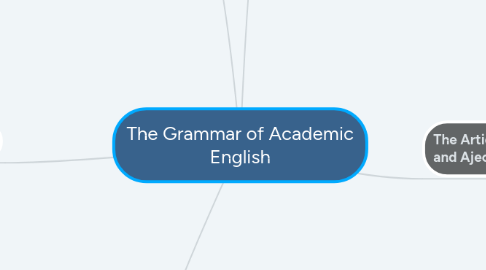
1. Connectors
1.1. Connectors allow to link ideas and information
1.1.1. Coordination: these conjunctions join equal terms
1.1.1.1. e.g. and, or, but, for, nor, so, yet.
1.1.2. Subordination: these conjunctions show a relationship of dependence or limitation
1.1.2.1. e.g. if, as, when, because
1.2. They help to avoid statements that do not follow sequency from preceding ones
2. Spelling Conventions and Accuracy
2.1. To avoid make some mistakes in sceintific writing, the writer must consider some advices in order to have a good performance in their papers
2.1.1. Misspelled words
2.1.1.1. Scientific work has credibilty with the proper use of language
2.1.2. Careful screening
2.1.2.1. Every document must be checked by the author/editor and the spellchecker
2.1.3. American and British spelling
2.1.3.1. Choice the type of spelling to use, American or British, to not confuse the readers
2.1.4. Spelling rules
2.1.4.1. Use the language requirements defined by the journal house style, if it is the case
3. English Passives and Actives
3.1. It forms the passive using Be+Past Participle
3.1.1. Intransitive verbs cannot be used in passive form. e.g. cry, work, laugh, talk, etc.
3.2. It uses passive when the complement of the sentence takes the action
3.3. It uses the active voice when the subject takes the action
3.4. Passive form is used in scientific writing because:
3.4.1. allow the facts stand on their own
3.4.2. avoid accusations (who did it, how many did it)
3.4.3. give a logic sense
4. Tenses and Concordance
4.1. Use of tenses in scientific writing
4.1.1. Past Tense to describe Methodology and Results
4.1.2. Present Tense to present Introduction and Conlusions sections, general findings and to discuss results
4.1.3. Future Tense to describe things that will happen
4.2. A sentence is composed by a noun and a verb. Nouns are clasified in
4.2.1. Tricky singular nouns: e.g. quantities
4.2.2. Irregular plurals: e.g. child/children; criterion/criteria.
4.2.3. Collective nouns: e.g. cattle, people, company.
4.2.4. Only-plural nouns: e.g. news, billiards, draughts.
5. The Article, the Noun and Ajectivation
5.1. Countable nouns are singular/plural, definite/indefinite
5.1.1. Singular: one instance of something
5.1.2. Plural: more than one instance of something
5.1.3. Definite: Clear instance(s) of something you are referring to
5.1.3.1. It uses the article "The"
5.1.4. Indefinite: Not specific instance of something you are referring to
5.1.4.1. It uses the articles "A" and "An"
5.2. Adjectivation
5.2.1. Adjectives precede nouns in English: e.g. He has a red car
5.2.2. Adverbs precede adjectives: e.g. She is really smart
5.2.3. Qualifying adjectives are not usually used in scientific writing

